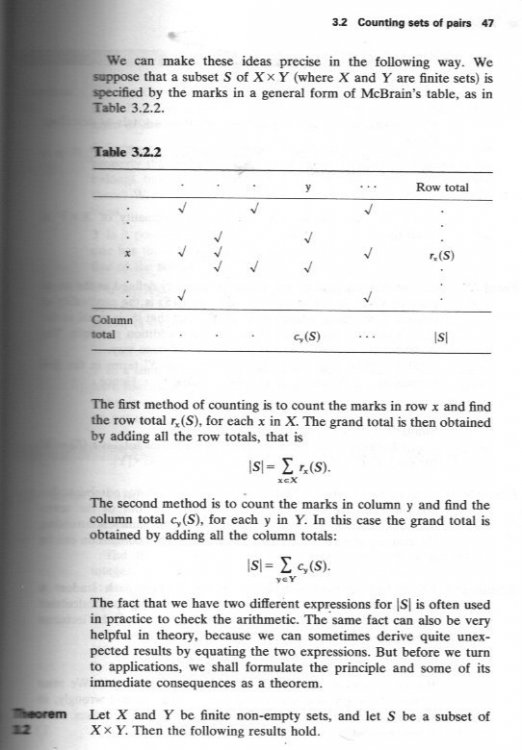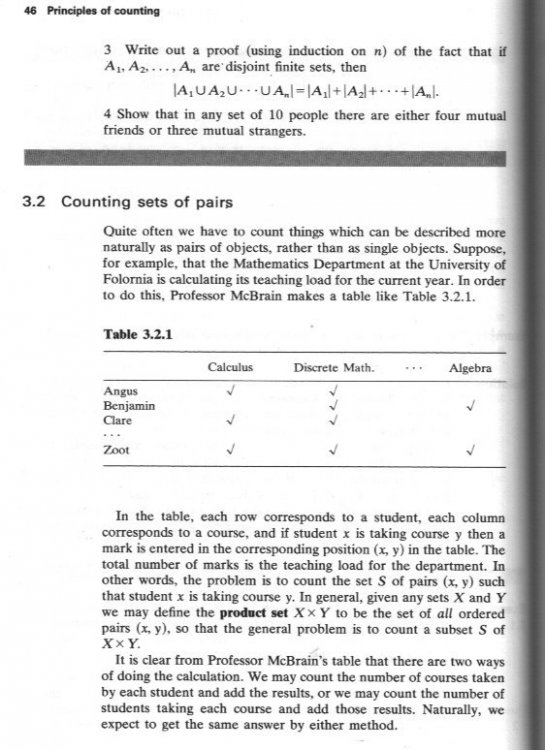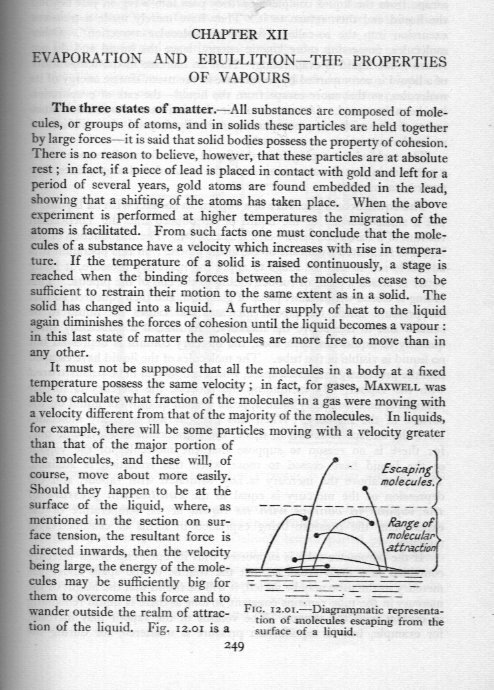-
Posts
18315 -
Joined
-
Last visited
-
Days Won
104
Content Type
Profiles
Forums
Events
Everything posted by studiot
-
A novel application of standard membrane technology similar to that used in sealed system hot water tanks to stabilise the oxygen supply from a concentrator in places where the electricity supply is unreliable. This is of particular use in developing countries where many many pneumonia sufferers are at risk and often children. Pneumonia (often called 'the old man's friend') is apparently the biggest cause of death in under 5's in the world. https://www.bbc.co.uk/news/av/stories-53918830
-

Discharge/Charge Curves of Lithium - Sulfur Batteries
studiot replied to Jake S.'s topic in Applied Chemistry
Obviously the experimental scientists will know how much sulphur and other compounds they put into battery. They will also know its dimensions. Current density etc are not directly measurable, currents and voltages are. So they will use measure the current and voltage using a suitable load to draw the currents over the range involved. (often this is a specialist piece of electronic kit known as a contant currrent load - these can be quite expensive) Then this can be combined with the known data to produce the graphs. https://www.google.co.uk/search?source=hp&ei=YCtKX7rSCt2GjLsP9tSc8As&q=constant+current+load&oq=constant+current+load&gs_lcp=CgZwc3ktYWIQAzICCAAyAggAMgIIADICCAAyAggAMgIIADICCAAyAggAMgYIABAWEB4yBggAEBYQHjoOCC4QsQMQxwEQowIQkwI6BQgAELEDOg4ILhCxAxCDARDHARCjAjoLCC4QsQMQxwEQowI6CAgAELEDEIMBOggILhCxAxCDAToFCC4QsQM6CwguEMcBEKMCEJMCOggILhDHARCjAjoICC4QsQMQkwJQpgNY_hxgziBoAHAAeACAAcoDiAGYMZIBCTAuMS42LjYuNpgBAKABAaoBB2d3cy13aXo&sclient=psy-ab&ved=0ahUKEwi6gvHil8DrAhVdA2MBHXYqB74Q4dUDCAg&uact=5 Of course, one would need to measure a sufficient number of batteries to obtain a statistical average. These could then be reliably compared for different battery geometries (shapes and sizes). A battery needs to do two thing internally. When charging you need to distribute the charge evenly, without creating localised hotspots - either chemical or thermal. Equally when discharging you need to collect the charge evenly without damaging the battery. -
This is only true of ideal, perfect components. Real world components can only support so much load which is why circuit engineers talk about fan in and fan out and component manufacturers include buffers. https://en.wikipedia.org/wiki/Fan-in https://en.wikipedia.org/wiki/Fan-out
-
Are you looking for an explanation of something like this ? Sorry about the scan quality but I have to rush it right now.
-

Discharge/Charge Curves of Lithium - Sulfur Batteries
studiot replied to Jake S.'s topic in Applied Chemistry
I assume you are studying this because you are interested in using lithium - sulphur rechargeable batteries as opposed to the chemistry of them ? The graphs are meant for users / manufacturers of these batteries. Remembering that a battery is a voltage source, which means that it theoretically provides a fixed voltage regardless of the current drawn. Real world batteries, including the Li - S ones suffer lowering of the voltage as the current drawn increases until the curve 'turn sharply downwards' which represents the limit of their usefulness as they can supply no greater current. In the published graphs the current is given as a current density in terms of cross sectional area of the 'plates' (the aereal scale) or the sulphur density (gravimetric) which has a practical chemical limit. If you assume unit cross section then a battery of that cross section would supply the scale current at the scale voltage. This enables manufacturers to design the size of the battery and users to estimate the discharge time. When charging, of course, the charging supply voltage has to exceed that of the battery terminals. So the charging curves show how much voltage is required to charge the cell and also at a given charging voltage, the charging current which when multiplied by the charging time gives the charge stored. The charge stored is called the capacity. Does this help ? -

Is there such a Thing as Good Philosophy vs Bad Philosophy?
studiot replied to joigus's topic in General Philosophy
The Staunton Defence ? Attempting to sidestep the question is inadequate. -
+1 for hanging in there. I have been following this discussion with interest but have insufficient knowledge to contribute anything else.
-

Is there such a Thing as Good Philosophy vs Bad Philosophy?
studiot replied to joigus's topic in General Philosophy
So mathematics can define things those words he said cannot even come close to. Whereas you said it couldn't even be stated with mathematics which is false. Declaration is not demonstration or other form of proof. I would would be interested if someone was able to write down totally mathematically what Prof Swinnerton said. What do you think the mathematical statement for granite is? -
Look here for the connection to Science. https://books.google.co.uk/books/about/The_Self_made_Tapestry.html?id=Fz1RAAAAMAAJ&redir_esc=y or here for the comparison of how Nature does things v how man achieves the same objects. https://books.google.co.uk/books/about/Cats_Paws_and_Catapults.html?id=fdihsss71tAC&redir_esc=y
-
C J Smith was Director of the Physics Laboratory at Kings College, University of London in the mid 20th century. He wrote several important texbooks for the sixth form and undergraduates. This was from the baby of them (mine is 1957) - only one thousand three hundred and thirty two pages -- Intermediate Physics. The undergraduate version runs to 5 volumes. Some of these older books have lots of useful subject matter in them that is no longer commonly taught.
-

Is there such a Thing as Good Philosophy vs Bad Philosophy?
studiot replied to joigus's topic in General Philosophy
+1 -
I gave +1 because you have identified all the important features of the situation. The difference between heated and not heated The difference between the inerior and surface environments. I was offering a treatment along the lines provided by Prof Smith, along with some additional diagrams and explanations of my own.
-

Is there such a Thing as Good Philosophy vs Bad Philosophy?
studiot replied to joigus's topic in General Philosophy
So ? -
+1 I would submit that there is a case that a strong and efficient testing regime is even more important now as communities are opening up and we ae seeing virus containment leaking at the edges. Europe in particular is teetering on the edge of a second wave.
-
I asked because any indirect sunlight must be reflected off something. As a consequence indirect sunlight may contain reduced, greatly reduced or even on UV.
-
Indirect sunlight ?
-
I agree. +1. I have already stated that there are two separate situations described in the OP. They are thermodynamically and kinetically different. Evaporation is an equilibrium process. Heating to(wards) boiling is not. There is also the fact that liquid molecules at the surface have (on average) more energy than those in the interior, when the liquid is in equilibrium. I takes a specific amount of energy to bring a molecule to the surface. All this is most conveniently illustrated with simple diagrams.
-
In the context of distortion, phase shift ( of 45o ) can be interpreted as a time delay. The distorting component is delayed by a time equivalent to one eigth of a cycle. More information might be available if you can expand on the context.
-

Why if at all would solar energy be expensive?
studiot replied to ScienceNostalgia101's topic in Engineering
Good contribution. +1 The French have a solar furnace capable of smelting metals, that works on this principle. -
I stepped back from this wrangle because it is taking the thread further and further from the OP, which is about evaporation. I offered the OP a simple development/presentation but he has not responded.
-

Length contraction is EM forces (split from Lorentz-contraction)
studiot replied to phyti's topic in Speculations
This comment of mine belongs here Relativity is taken into account into modern treatments of bonding, starting with Dirac's equation. But, considered as speeding point charges and masses, electrons are not moving fast enough for the drastic and dramatic scenerios postulated by winterlong. Splitting a thead is usually difficult, but well done swansont. -
How are these a vibration of the molecule as a whole? Indeed so, did I not say say that the key motion is translation of the whole molecule ? How is this a vibration?
-
Not at all. Molecules (in liquids) dance, they spin around, they waggle and wiggle, but they (the molecules) do not vibrate. Molecules in solids can vibrate. Individual parts of molecules (in liquids) can vibrate relative to other individual parts, but the molecule as a whole does not vibrate. We are only interested in motion that can lead to translation (ie evaporation) and that is the first one on my list. To vibrate requires a fixed restoring force, which is present in solids, but not in liquids. Such a restoring force is present within a molecule, but relative displacement of parts of an object cannot lead to displacement of the whole object in isolation.




